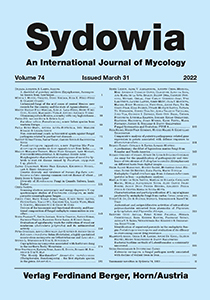
Morphogenetic characteristics and response of novel Masoud Mazaheri Tehrani, Mehdi Nasr Esfahani, Amir Mousavi, Forough Mortezaiinezhad & Mohammad Hosein Azimi Sydowia 74: 93-106 Published online on August 30th, 2021 We sought to identify the rates of diversity, genetic relationships and reaction to Fusarium oxysporum f. sp. gladioli (FOG) of 26 promising Iris hybrids, id est Iris germanica along with their parents. Morphological characters were analyzed by 12 quantitative traits based on description UPOV, using rulers and digital calipers, genetic diversity by extraction of DNA using Iraizol® kit and PCR by 24 ISSR primers. There was a significant difference between Iris hybrids and parents population in terms of morphological traits. Nineteen ISSR primers out of 24 primers showed high genetic diversity, in which 378 bands out of 526 amplified bands showed clear polymorphism, ranging from 11 bands in HB13 primer and 31 bands in IS8 primer (61.11–84.84%). The mean polymorphic information content (PIC) parameter was 0.347, ranging from 0.216 to 0.495. Screening test to FOG showed significant variation, of which hybrids NIOP3, NIOP15 and NIOP16 had the lowest infection. Keywords: Genotype, hybrid, Iris germanica, ISSR, pathogenicity, resistance. |
 |